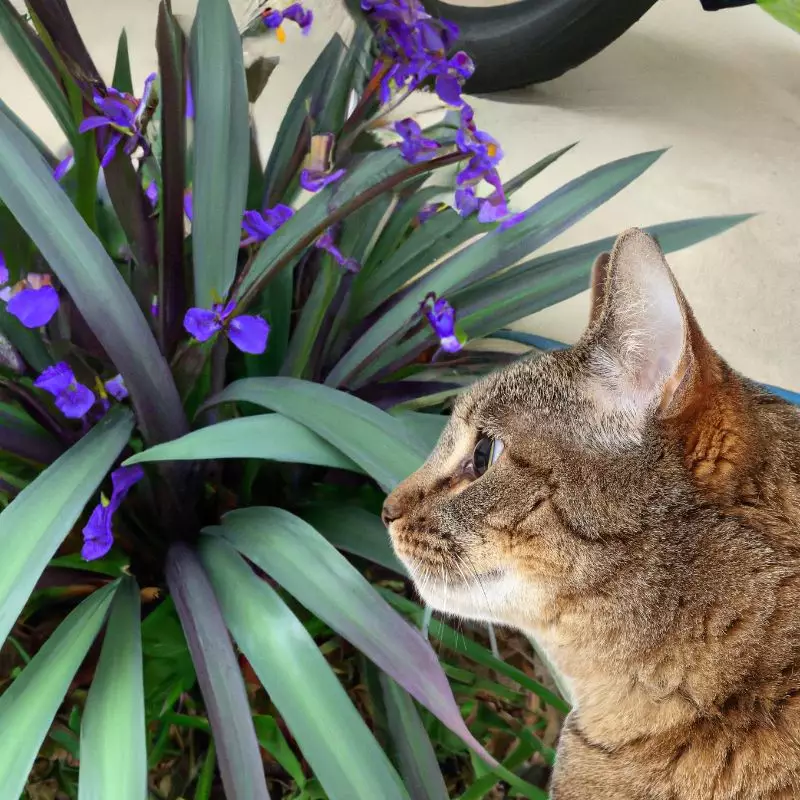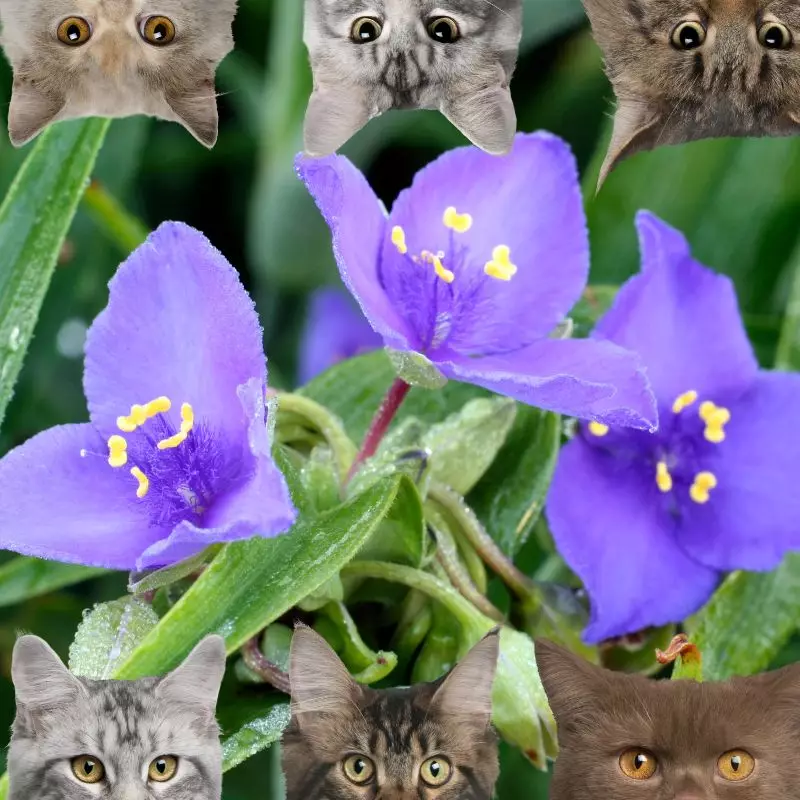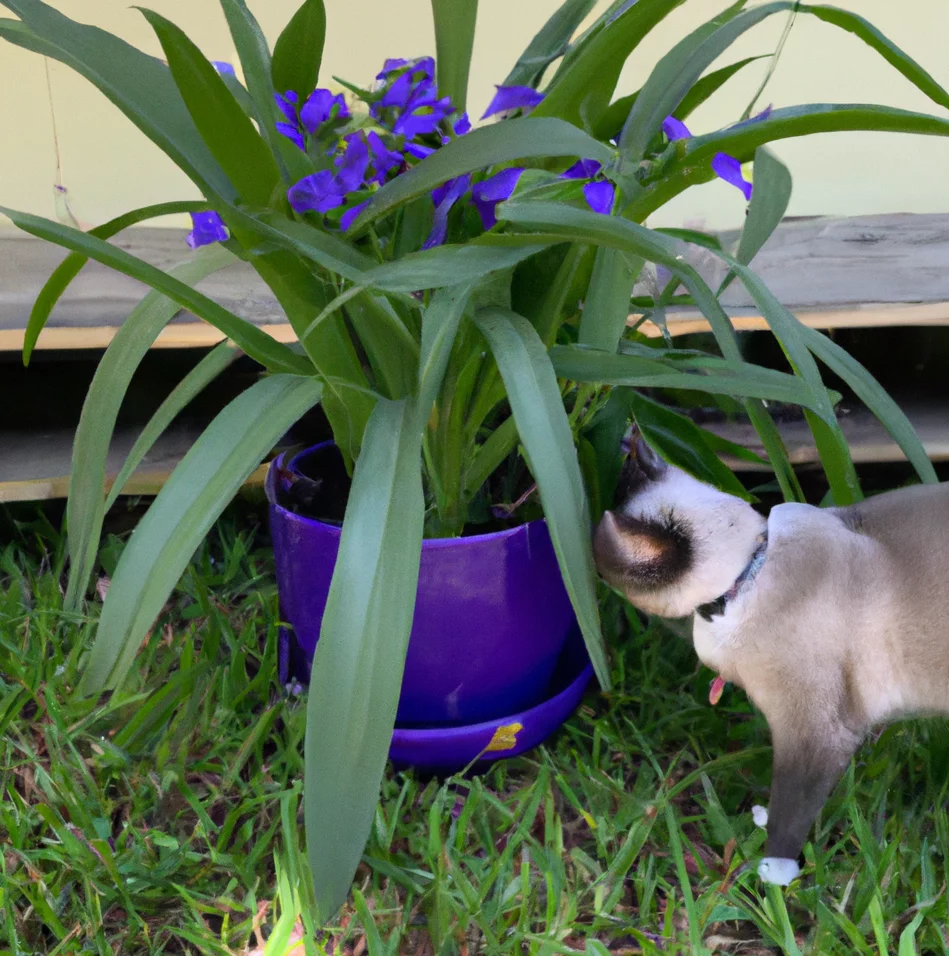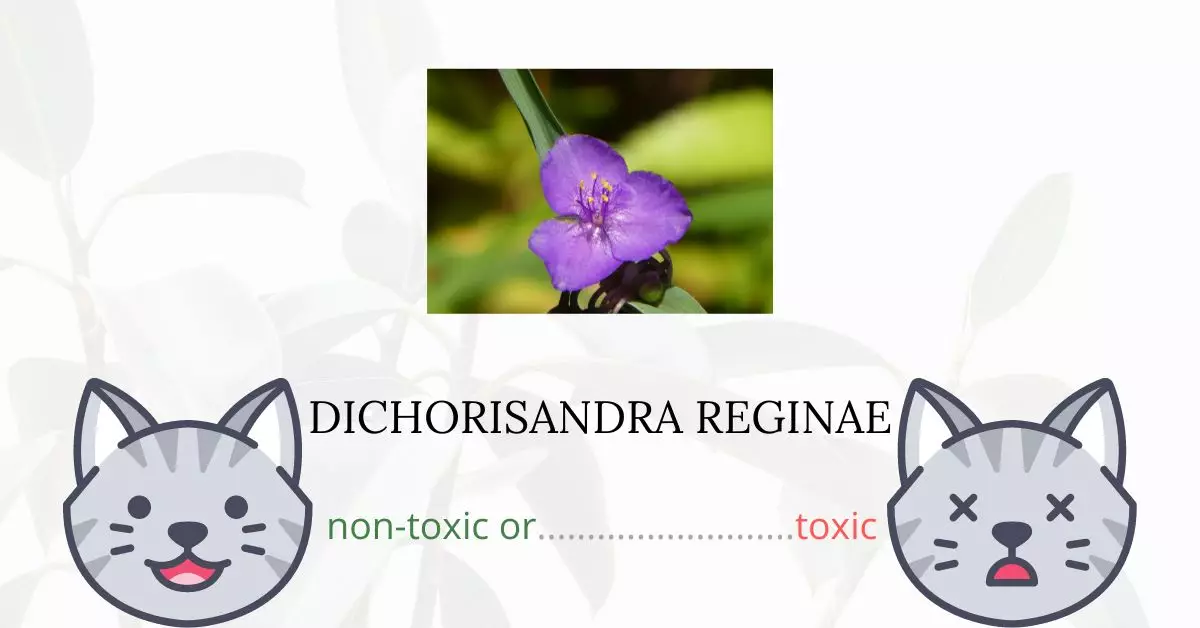Dichorisandra Reginae, commonly known as Queen’s Spiderwort, is not reported to be toxic for cats.
To ensure that this information is both accurate and up-to-date, this article has been written in collaboration with a team of experienced DVMs (doctors of veterinary medicine). Their expertise, combined with our thorough research from high-authority websites such as ASPCA and PetMD, allows us to provide a comprehensive understanding of the potential risks associated with various plants, focusing specifically on Dichorisandra Reginae in this context.
While the American Society for the Prevention of Cruelty to Animals (ASPCA) classifies it as non-toxic to cats, it’s crucial to note that “non-toxic” does not imply that the plant should be consumed by your feline companions. Always exercise caution when introducing any plant into an environment with pets.
Can Cats Eat Dichorisandra Reginae or Queen’s Spiderwort?

Cats can eat a few amounts of this plant. Despite the fact that this plant is non-toxic, any plant may cause unexpected reactions in certain cats. Plants can cause stomach discomfort in the same way as unusual diets or too much food can cause vomiting.
The natural fiber is essential for cats to consume, and oat grass and dried ficus leaves are two fantastic plants that cats enjoy. This additional fiber is good for digestion and may help with natural tooth cleaning.
What is Dichorisandra Reginae or Queen’s Spiderwort?

Queen’s Spiderwort is a stunning purple tropical perennial plant endemic to Peru. Dichorisandra is a genus of perennial monocotyledonous flowering plants in the dayflower family that is frequently used as a houseplant in interiorscapes (Commelinaceae).
The genus is known for its slightly zygomorphic flowers with big anthers that normally release pollen through pores at the apex, as well as its seeds, which are embedded in a red or sometimes white aril, and tubers that often grow at the terminals of the roots. It is very closely related to the genus Siderasis, according to both morphology and DNA sequence research.
Keeping Cats Away From Dichorisandra Reginae or Queen’s Spiderwort

Some cats are adamant about gaining access and will not be deterred by anything. Mulching the barren ground around plants with prickly materials like coarse bark, twigs, pyracantha prunings, pine cones, conifer needles, and holly leaves will provide some protection.
Cats prefer to walk and dig in soft, flexible dirt. Many people propose scattering citrus peel (orange, lemon, lime, grapefruit) around plants. Cats dislike the smell of citrus oil.
However, cats will become accustomed to all of these ways over time, and you may need to switch strategies.
Planting catnip and placing a litter tray close is also another option. It is also a good method to place your plants in a secured space that your cats cannot access. Cats usually do not make effort to come near a plant that is not in its usual place or out of their paws’ reach.
Plants to Avoid For Your Cats
If you are a cat owner and unsure if the plants growing in your yard are harmful to your cats, check out this list of toxic plants for cats. You can also check our list of non-toxic plants for cats.





